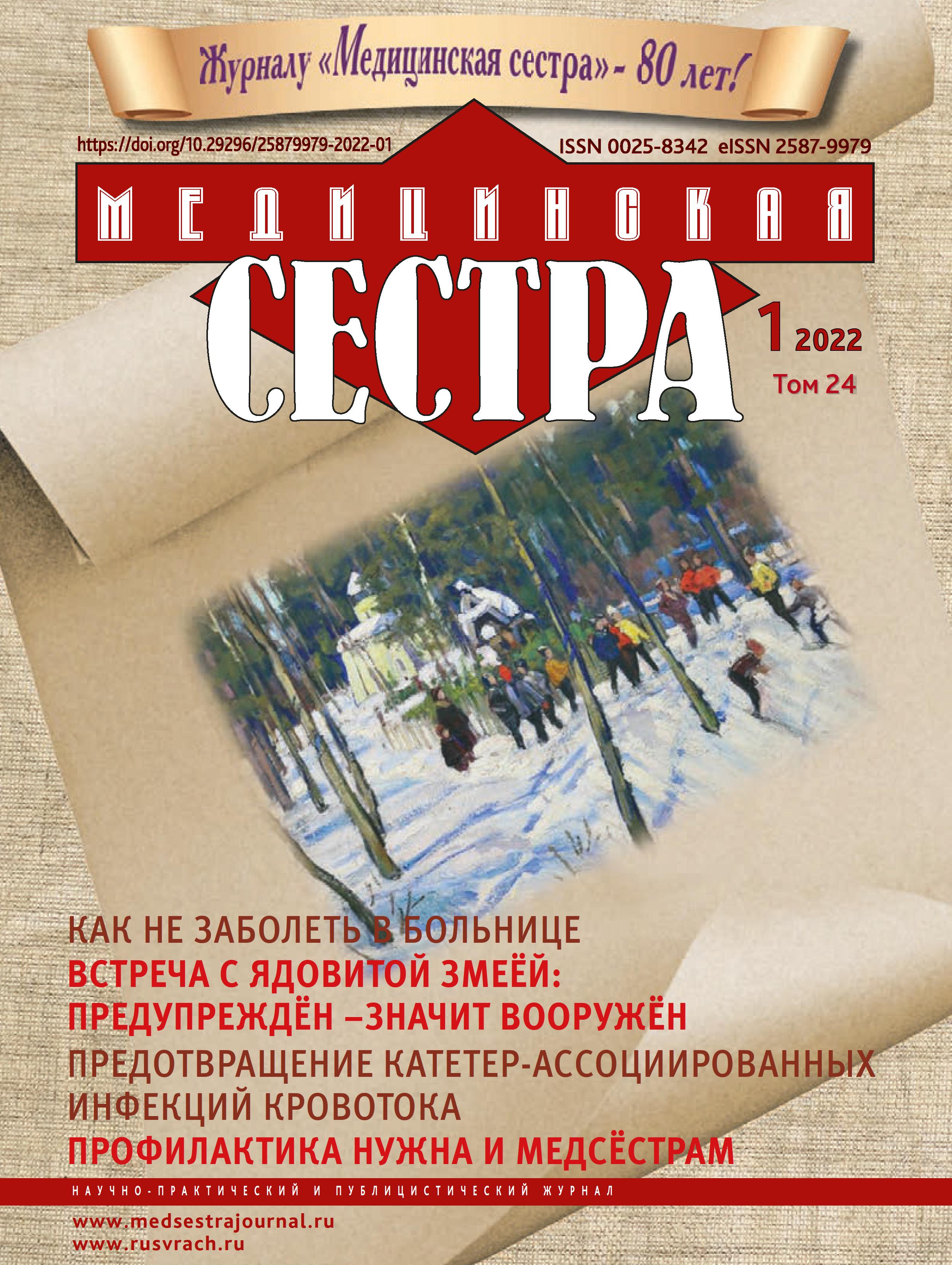Nosocomial pneumonia
- 作者: Skvortsov V.V.1, Tinaeva R.S.1, Matveyev N.D.1, Gorbach A.N.1
-
隶属关系:
- Federal State Budgetary Educational Institution of Higher Education «Volgograd state medical university» of the ministry of health of the Russian Federation
- 期: 卷 24, 编号 1 (2022)
- 页面: 20-25
- 栏目: Topical theme
- URL: https://journals.eco-vector.com/0025-8342/article/view/113847
- DOI: https://doi.org/10.29296/25879979-2022-01-03
- ID: 113847
如何引用文章
详细
Nosocomial pneumonia has the highest morbidity and mortality rates among all nosocomial infections. Current estimates show that the frequency of HAP is from 5 to 10 cases per 1000 hospitalizations. The length of hospital stay increases in patients with HAP by an average of 7-9 days per patient. HAP is the cause of approximately 25% of all infections in intensive care units and more than 50% of prescribed antibiotics. The time of onset may be a predictor of outcome, as early initiation of HAP is associated with a better prognosis, mainly due to bacteria that are more susceptible to antibacterial agents. Late onset of HAP (>5 days) is more often caused by multidrug-resistant microorganisms. Although the HAP-related mortality rate can reach 30-70%, many seriously ill HAP patients die as a result of the underlying disease, not pneumonia. Despite significant advances in modern medicine and pharmacology, pneumonia continues to occupy a leading position in the structure of morbidity. This requires constant optimization of management tactics for patients with pneumonia in order to monitor the validity of pharmacotherapy for pneumonia in hospitals.
全文:
作者简介
Vsevolod Skvortsov
Federal State Budgetary Educational Institution of Higher Education «Volgograd state medical university» of the ministry of health of the Russian Federation
Email: vskvortsov1@ya.ru
Doctor of Medicine, Associate Professor of the Department of Internal Medicine
俄罗斯联邦,R. Tinaeva
Federal State Budgetary Educational Institution of Higher Education «Volgograd state medical university» of the ministry of health of the Russian Federation
Email: tinaeva2001@yandex.ru
студентка
俄罗斯联邦,N. Matveyev
Federal State Budgetary Educational Institution of Higher Education «Volgograd state medical university» of the ministry of health of the Russian Federation
Email: nikita.mat.2012@mail.ru
студент
俄罗斯联邦,A. Gorbach
Federal State Budgetary Educational Institution of Higher Education «Volgograd state medical university» of the ministry of health of the Russian Federation
编辑信件的主要联系方式.
Email: rainy.season@yandex.ru
ординатор
俄罗斯联邦,参考
- Beloborodov V. B., Sinikin V. A. Modern antibacterial therapy in hospital-acquired pneumonia. Medical Council. 2017; 18: 70–76.
- Bova A.A. Pneumonia: etiology, pathogenesis, clinical manifestations, diagnosis. Military medicine. 2017; 1: 83–91.
- Galushko M.G. Pharmacotherapy of community-acquired pneumonia in a therapeutic hospital: analysis of compliance with modern clinical recommendations and standards. University Medicine of the Urals. 2017; 2(9): 46–47
- Deryushkin V.G. Analysis of the choice of antimicrobial drugs for non-severe community-acquired pneumonia by graduates of a medical university. High-quality clinical practice. 2021; 2: 31–37.
- Kruglyakova L.V., Naryshkina S.V., Odireev A.N. Modern aspects of community-acquired pneumonia. Bulletin of Physiology and Pathology of Respiration. 2019; 71: 120–134.
- Malykhin F.T. A study of the preparedness of polyclinic doctors to conduct antibiotic therapy for community-acquired pneumonia. Fundamental research. 2011; 10(1): 113–117.
- Marinin V.F. Treatment of nosocomial pneumonia. Practical medicine. 2005; 1(10): 7–8.
- Niztaeva E.N. Pharmacotherapy and pharmacoeconomics of non-severe forms of community-acquired pneumonia. News of universities (Kyrgyzstan). 2008; 5: 309–313.
- Protsenko D.N., Belotserkovsky B.Z. Nosocomial pneumonia in adults: Russian national guidelines / Ed. acad. RAS B.R. Gelfand; - 2nd ed., revised. and additional - M.: LLC Publishing House Medical Information Agency, 2016; P. 176.
- Rachina S. A., Kozlov R. S., Dekhnich N. N., Bobylev A. A., Barashko O. D. Antibacterial therapy for severe community-acquired pneumonia in adults: a review of recommendations and clinical examples. Archives of Internal Medicine. 2015; 3: 63–74.
- Skvortsov V.V., Skvortsova A.V., Khalilova U.A. Actual issues of diagnosis and treatment of community-acquired pneumonia. Man and Medicine - Kazakhstan. No. 2 (80), 2017. P.28–35.
- Skvortsov V.V. Internal illnesses. – M.: Eksmo, 2010; P. 1072.
- Chuchalin A.G., Sinopalnikov A.I., Kozlov R.S. et al.Community-acquired pneumonia in adults. Practical recommendations for diagnosis, treatment and prevention. M., 2019; P. 97.
- Shastin A.S., Bushueva T.V., Gazimova V.G.et al. The incidence of respiratory diseases during the pandemic of a new coronavirus infection CОVID-19 in the Russian Federation 2021; 32(11): 11–17.
- Karpina N.L., Asanov R.B., Shishkina E.R., Egorova A.D., Ergeshov A.E. A modern view on diagnostic errors in cavitary formations in the lungs Vrach. 2021; 32(2): 32–37.
补充文件





